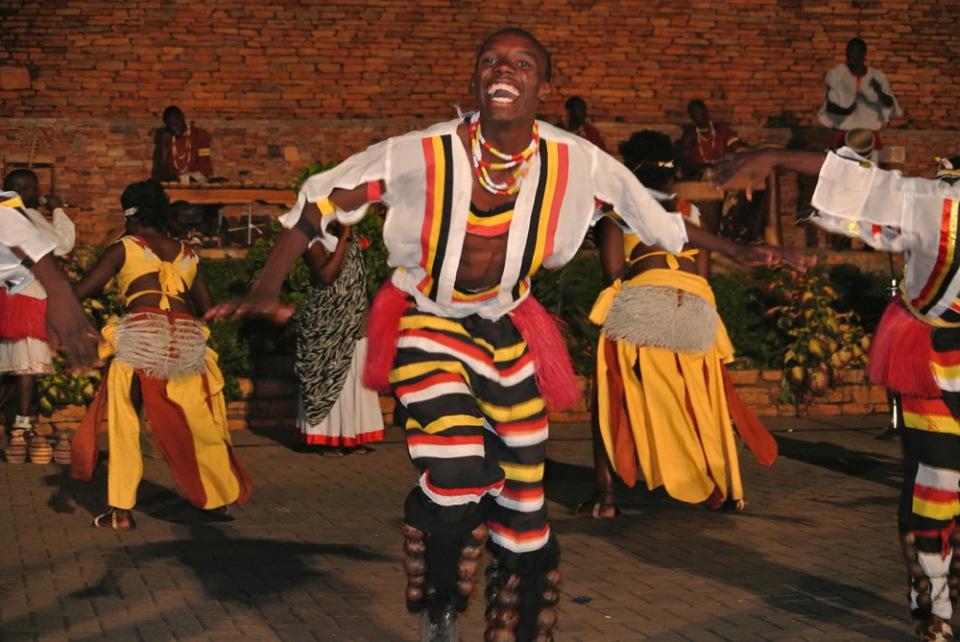What Makes Ugandan Traditional Music So Cool
19 September 2023

[Uganda Traditional Music/Global Movement]
In the heart of East Africa, Uganda's musical landscape resonates with the vibrant rhythms and melodies of its diverse cultures. Traditional music in Uganda is a tapestry woven with the threads of history, heritage, and tradition. This article explores the origins, genres, renowned musicians, historical context, and cultural significance of traditional music in this captivating country.
Origins of Ugandan Traditional Music
The roots of Ugandan traditional music run deep, reflecting the country's diverse ethnic groups, each with its own unique musical traditions. The history of Ugandan traditional music is intertwined with the ancestral practices of indigenous communities, which have been passed down through generations.
Traditional music in Uganda encompasses a wide range of instruments, vocal styles, and dances, all of which play a vital role in expressing the cultural identity of various communities. Drums, xylophones, flutes, harps, and traditional string instruments like the adungu and endongo are some of the many instruments that are used to create the distinct sounds of Ugandan traditional music.
Different Genres of Ugandan Traditional Music
Ugandan traditional music is incredibly diverse, with each ethnic group contributing to its unique tapestry. Some of the prominent genres include:
1. Ganda Music: This genre hails from the Baganda people, Uganda's largest ethnic group. It features the royal drum ensemble, which is an essential component of Ganda music, and is characterized by its distinct rhythms and vocal harmonies.
2. Acholi Music: The Acholi people in northern Uganda have their own rich musical traditions, often accompanied by the thumb piano (lokembe) and various percussion instruments. Acholi music is known for its storytelling elements and lyrical depth.
3. Banyankole Music: The Banyankole people of western Uganda incorporate cattle herding songs and dances into their musical traditions. The use of enanga (a multi-stringed instrument) and ebinyege (flutes) is common in Banyankole music.
4. Bagisu Music: Bagisu music, originating from the Bagisu people of eastern Uganda, features unique vocal styles and intricate rhythms. The bungoma, a traditional drum, is a central instrument in Bagisu music.
Renowned Ugandan Traditional Musicians
Several traditional musicians have left an indelible mark on Uganda's cultural landscape. Among the most celebrated are:
1. Elly Wamala: Often referred to as the "father of modern Ugandan music," Elly Wamala's compositions transcended traditional boundaries and influenced generations of musicians.
2. Rachael Magoola: Renowned for her dynamic performances and fusion of traditional and contemporary sounds, Rachael Magoola has played a pivotal role in promoting Ugandan folk music on the global stage.
3. Christopher Ssebadduka: A master of the xylophone, Ssebadduka's intricate melodies and virtuosity on the instrument have earned him recognition as a national treasure.
History of Ugandan Traditional Music
Ugandan traditional music has a storied history, evolving alongside the nation's socio-political changes. During the colonial period, traditional music was marginalized in favor of Western influences, but it managed to survive through oral traditions and community gatherings.
In post-colonial Uganda, there was a resurgence of interest in traditional music as a means of preserving cultural heritage. The government recognized the importance of traditional music and established institutions like the National Cultural Center (Ndere Troupe) to promote and preserve these art forms.
Role of Traditional Music in Ugandan Culture
Traditional music in Uganda serves as a powerful cultural bridge, connecting past and present, and fostering a sense of identity and belonging. It plays a pivotal role in various aspects of Ugandan culture:
1. Ceremonial Music: Traditional music accompanies important life events such as birth, marriage, and death. It enriches these ceremonies with meaning and tradition.
2. Storytelling: Traditional music is a means of preserving and passing down oral histories, myths, and legends. It serves as a repository of cultural knowledge.
3. Social Cohesion: Music and dance provide a sense of community and social cohesion. They bring people together, fostering unity and shared experiences.
4. Resistance and Protest: Throughout Uganda's history, traditional music has been used as a form of resistance and protest against oppressive regimes. Songs often carry powerful messages of change and social justice.
5. Education and Entertainment: Traditional music is a medium for educating young generations about their cultural heritage. It also offers entertainment and joy in everyday life.
Conclusion
Ugandan traditional music is not merely a collection of melodies and rhythms; it is the heartbeat of a nation, a testament to the resilience of its people, and a repository of its rich cultural heritage. As the country continues to evolve, traditional music remains a steadfast reminder of Uganda's diverse traditions and the enduring power of music to unite, educate, and inspire. In a world that constantly changes, Ugandan traditional music stands as a timeless treasure, preserving the soul of a nation.





Leave your comment